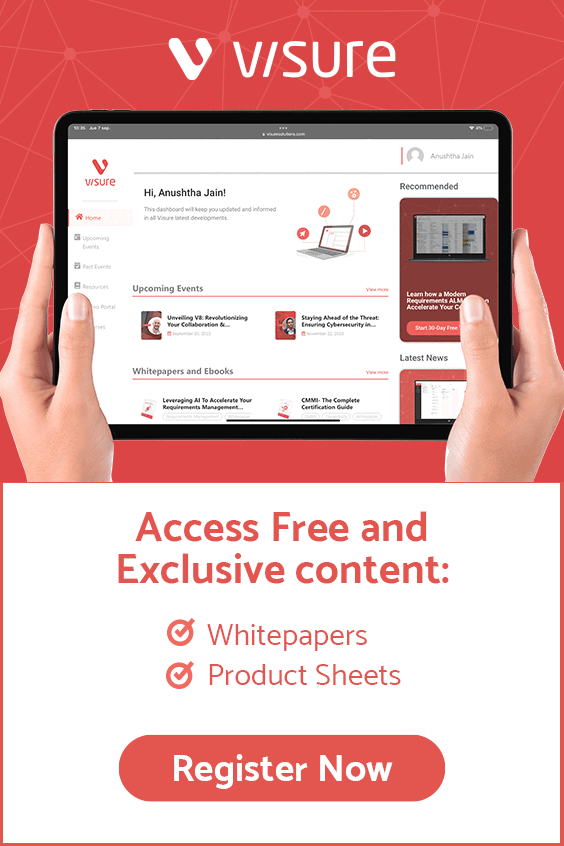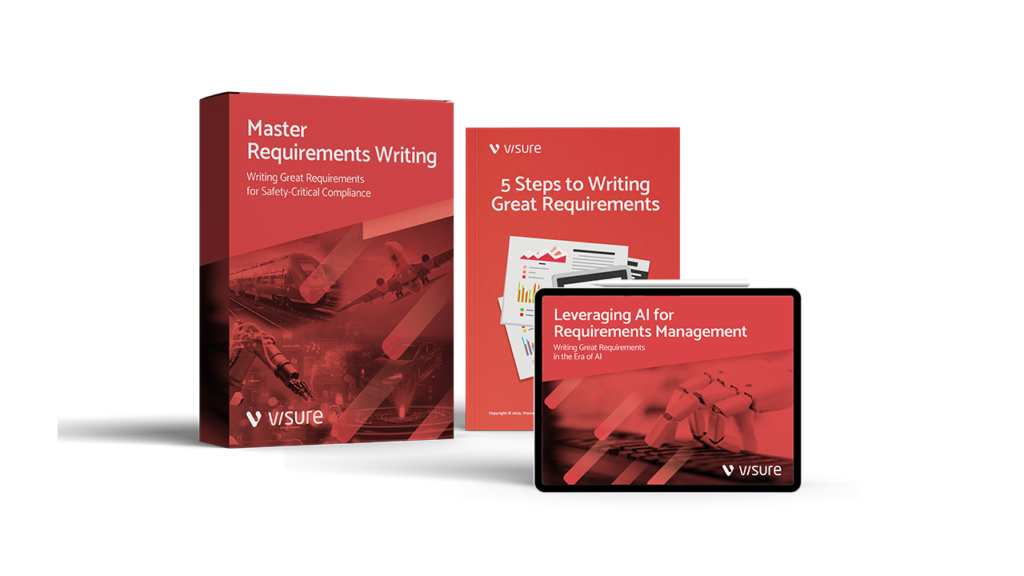In the age of connected devices, cyber-physical systems, and integrated products, the convergence of hardware and software is no longer optional, it’s foundational. In the podcast episode, Fernando Valera discusses how requirements engineering, digital thread strategies, and alignment between hardware and software teams are essential to successful product development.
This article explores how the collaboration between Visure’s requirements/ALM platform and Razorleaf’s integration and digital-thread expertise enables organisations to streamline hardware-software product development, reduce risk, speed time-to-market, and maximise innovation.
Understanding the Landscape: Why Hardware-Software Convergence Matters
The challenge of divergent lifecycles
One of the core themes from the episode: hardware development and software development often follow very different cadences. Hardware tends to move more slowly, with longer design cycles, while software uses agile, iterative approaches. Bridging this gap is critical.
The role of systems engineering and MBSE
Valera emphasises that modern product development needs a common language, enter systems engineering and model-based systems engineering (MBSE). These frameworks help unify hardware, software, and systems thinking under one roof.
Digital twins and the acceleration of development
The episode highlights how the concept of a digital twin, virtual representations of hardware or products, can accelerate hardware development in a way analogous to how DevOps transformed software. Quoting Valera: “Digital twins are speeding up hardware development the same way DevOps transformed software.”
AI’s growing influence on requirements and traceability
Another powerful insight: AI is now capable of doing “80 % of what a requirements engineer does, but it’s the boring 80 %.” This underscores how automation and intelligent tooling can free engineers for higher-value work.
How Visure Supports Hardware-Software Converged Development
Unified requirements engineering across domains
Visure Requirements ALM Platform enables teams to manage requirements for mechanical, electrical, embedded software, interfaces, safety, and compliance, all in one place. By consolidating these artifacts, teams avoid silos and ensure traceability from the get-go.
Traceability, risk, change, and audit capabilities
Visure allows linking between requirements → test cases → defects → change records → risks. For regulated industries (automotive, aerospace, medical devices), this end-to-end traceability is invaluable.
Variant, baseline & release management
As products evolve and variants proliferate, Visure’s baseline and versioning capabilities allow organisations to manage multiple product configurations while retaining clarity over which hardware/software combination is valid.
How Razorleaf Complements the Platform for Enterprise-Scale Impact
Integration and the digital thread
Razorleaf Corporation specialises in connecting enterprise systems, PLM, PDM, ALM, ERP, and MES, so that data flows seamlessly across the product lifecycle. Their ‘digital thread’ strategy ensures no artifact is left isolated.
Workflow design, toolchain alignment, and organisational readiness
Razorleaf brings expertise in aligning hardware and software teams, defining common cadences and governance. In the podcast, it’s clear that organisational culture and process alignment are just as important as tools.
Incremental implementation and maturity growth
Instead of big-bang, Razorleaf advocates for incremental implementation: start small, prove value, scale readiness, mature processes. This approach helps manage risk, budget, and stakeholder buy-in.
A Step-by-Step Workflow: Visure and Razorleaf in Concert
- Capture and structure all requirements in Visure: hardware specs, software features, interface requirements, safety/functional requirements.
- Link requirements to tests, risks, and changes: ensure traceability and visibility of dependencies.
- Design integration architecture: Razorleaf connects Visure to PDM/PLM (mechanical/electrical data), software ALM, ERP/production systems, supplier systems, creating the digital thread.
- Align workflows and cadences: hardware and software teams adopt common milestones, baselining points, and change gateways.
- Leverage digital twins and simulation: virtual models allow early validation of hardware and software interactions.
- Automate traceability, compliance, and impact analysis: AI in Visure supports requirements quality and risk detection; Razorleaf ensures data propagates across systems.
- Use metrics and feedback loops: track reductions in rework, improvements in time-to-market, and enhancements in product quality.
Key Benefits for Product Development Organisations
- Faster time-to-market: With fewer handoffs, earlier validation, and tighter alignment, products get to market quicker.
- Improved product quality and reliability: Traceability across domains helps detect issues earlier and reduces downstream defects.
- Reduced cost and waste: Integrated workflows mean less rework, fewer surprises, and better resource utilisation.
- Better compliance and audit readiness: For safety-critical domains, trace links and baselining provide audit trails and support for standards.
- Scalability for future products: As hardware/software complexity increases (IoT, connectivity, ADAS, etc), the architecture supports growth.
Implementation Best Practices & Insights from the Episode
- Address the cultural divide: The episode stresses that hardware and software teams must adopt a shared mindset, not just share tools.
- Don’t ignore the tooling architecture: Choosing Visure is just the start; the surrounding integration (Razorleaf) and workflow are equally vital.
- Build the digital thread early: Every artifact, from a requirement to a CAD model, a software module, a test case, should be traceable and linked.
- Use AI and simulation: The quoted insight about AI doing the “boring 80 %” of requirements work means your engineers can focus on higher-value innovation.
- Incremental rollout wins: Start with one product line or domain, prove out the approach, measure metrics, and expand.
- Metrics-driven improvement: Establish KPIs (defects after release, time-to-baseline, number of rewrites) and iterate.
Conclusion
The episode “Bridging Hardware and Software: The Future of Product Development” provides a clear vision: the future of product engineering lies in convergence, traceability, digital twin-driven design, and intelligent tooling.
By leveraging the strengths of Visure’s Requirements ALM Platform and Razorleaf’s system-integration and digital-thread expertise, organisations can transform how they develop products, bringing hardware and software together in a seamless, efficient, and future-ready process.
If you’re involved in hardware-software product development, especially where complexity, compliance, and speed matter, this combined approach offers a powerful path forward.


